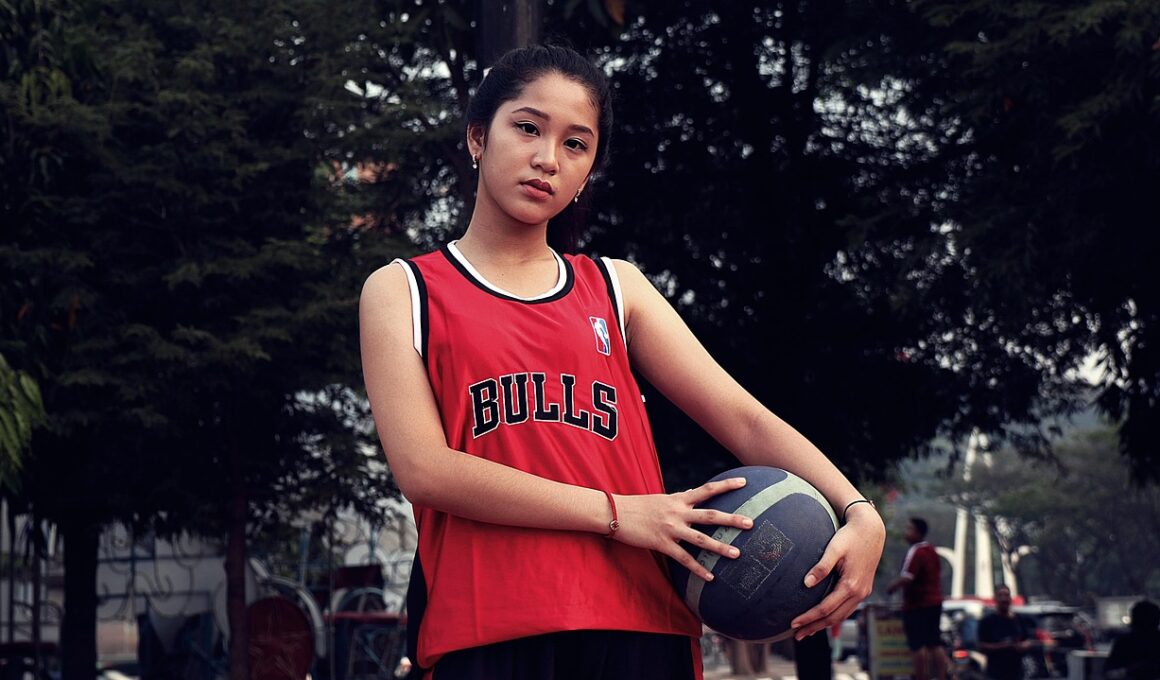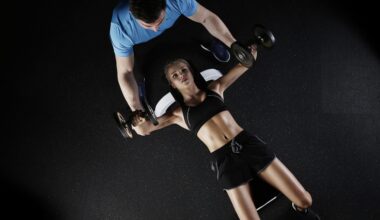The Influence of Peer Pressure on Teen Fitness Habits
Understanding peer pressure’s role in influencing teen fitness habits is crucial in combating childhood obesity. Teens are particularly susceptible to the behaviors and attitudes of their peers. Their choices regarding physical activity often reflect the values of their social circles. This peer influence can support healthy habits or, conversely, lead to inactivity. For instance, if teenagers are surrounded by friends who prioritize sports and fitness, they are more likely to engage in these activities themselves. However, if their friends value sedentary pastimes like video games, teens might follow suit. Additionally, social media has amplified peer pressure’s impact, showcasing fitness trends that teens feel compelled to follow, further affecting their decisions. They may choose to adopt certain diets or fitness challenges popularized online, sometimes overlooking their own health needs. It is important for parents and educators to facilitate discussions about peer influence among teens. Encouraging positive peer interactions can lead to healthier lifestyles. Developing a supportive community can play a significant role in creating an environment where fitness is valued. Ultimately, understanding these dynamics is key to formulating effective strategies against childhood obesity.
Peer Groups and Physical Activity
Peer pressure can significantly impact teens’ attitudes towards physical activity. Participating in group sports or fitness activities often fosters a sense of community, which can motivate individual participation. Teens are more likely to exercise if they see their friends participating actively in physical activities. Schools play a critical role in this dynamic by promoting teamwork through sports. If a peer group enjoys PlayStation or watching others on YouTube, teens might find it challenging to motivate themselves to exercise. Parents can encourage positive friendships where fitness is valued by organizing community sports events. Educational initiatives can also help facilitate these interactions. For instance, schools that offer various athletic programs may connect students metaphorically and physically, leading to enhanced fitness levels. On the other hand, if fitness becomes a competitive element among peers, it can sometimes lead to negative body image issues. Those who feel they don’t measure up might withdraw from physical activities entirely. Thus, promoting a balanced view of fitness through healthy peer relationships is essential for physical well-being and self-esteem. By fostering supportive peer environments, we can positively influence teens’ fitness habits and ultimately address childhood obesity.
The perception of body image significantly affects a teen’s fitness habits and is influenced by peer dynamics. Teens can be sensitive to how their appearance is perceived by their friends, which can lead to exercising for reasons that may not be health-focused. Many teens may feel pressured to conform to social standards involving fitness and body shapes, as depicted in media and through social interactions. Negative body image can deter participation in physical activities, especially among those who fear judgment from peers. Some might even engage in unhealthy weight loss methods to fit into their ideal body type, thereby jeopardizing their health. Thus, fostering a positive body image through supportive peer groups can encourage more teens to engage in physical activities for the right reasons. Schools, parents, and community organizations should work together to emphasize health over appearance. This helps build resilience against negative peer pressures regarding fitness. Celebrating diverse body types can lead to a more inclusive environment that accepts all teens, regardless of their fitness levels or body shapes. By prioritizing health and well-being, we can help combat childhood obesity and encourage lasting, healthy habits among teens.
Building Supportive Environments
Creating supportive environments is vital for enhancing teen fitness habits deeply influenced by peers. Community and family play critical roles in reinforcing healthy choices. When teens feel supported, they are more likely to adopt and maintain active lifestyles. Parents should actively encourage their children to explore various physical activities with their peers. This can include joining youth sports teams or participating in family outdoor activities. Moreover, schools can foster a positive atmosphere by implementing daily physical education classes, encouraging everyone to participate, irrespective of their skill levels. Developing peer mentorship programs where active teens can support those less inclined towards fitness can also contribute positively. These aspects help teens see exercise as fun, not just as a chore. Schools can host fitness challenges or social events featuring physical activities to further promote the culture of fitness. Communication about health and fitness should be flexible to meet teens where they are developmentally. By doing so, we can diminish the stigma often associated with being less athletic. These supportive strategies can significantly impact fighting childhood obesity while promoting a culture of healthy living among teens through peer support.
Social media’s role in shaping teen fitness habits cannot be underestimated as it acts as a digital peer group influencing lifestyle choices. Teens are bombarded with fitness trends, challenges, and influencers who embody the idealized version of fitness they should aspire to achieve. The content that glorifies extreme fitness or diet trends can lead to unrealistic expectations among teens, which can spur issues related to body image. These online platforms can create a competitive rather than collaborative spirit among peers regarding fitness. However, when used positively, social media can serve as a tool for motivation and inspiration. Teens can find supportive groups focused on fitness, share their goals, and engage in activities encouraging healthy competition rather than unhealthy rivalry. Parents and educators must guide teens to ensure a healthy relationship with social media. This involves discussing the differences between reality and social media portrayals of fitness. When teens are equipped to recognize harmful content, they can better navigate their online presence, leading to healthier fitness habits. Understanding the influence of social media is imperative in preventing childhood obesity and promoting healthier lifestyles effectively.
Strategies for Positive Peer Influence
Implementing strategies that cultivate positive peer influences among teens is essential to developing healthy fitness habits. Encouraging activities that promote teamwork and cooperation, rather than competition, can help create a supportive atmosphere. Group-based activities, such as dance classes, team sports, or outdoor adventures, foster friendship and collaboration. Establishing clear guidelines about healthy competition can further enhance this process. Educators and parents can foster discussions about setting realistic goals and prioritizing personal well-being over competing with peers. Establishing accountability through buddy systems can motivate teens to stay committed to their fitness journeys. Teens also benefit from group rewards or recognition for collective achievements in fitness, reinforcing positive associations with working out. Schools can incorporate programs aimed at promoting inclusivity, ensuring that no group feels alienated when participating in activities. Furthermore, educating students about the benefits of fitness and nutrition can further align peer influences with health goals. Being informed about the consequences of unhealthy habits can empower teens to choose fitness over sedentary lifestyles. By applying these strategies, we can collectively create a culture of wellness where teens inspire and support each other in maintaining a healthy lifestyle.
In conclusion, peer pressure plays a pivotal role in shaping teen fitness habits and combating childhood obesity. The social context in which teens operate influences their choices about physical activity and lifestyle in significant ways. Understanding this dynamic offers more effective strategies to guide teenagers toward healthier behaviors. By addressing negative aspects of peer influence and promoting positive interactions, we can create environments that support physical fitness. This involves not only fostering supportive friendships but also encouraging diverse activities that appeal to all teens, irrespective of their physical abilities. Combating the sedentary lifestyle prevalent among many teens requires a collective effort from parents, educators, and the community. The goal should be to create an active culture where physical fitness is valued and celebrated. By implementing supportive strategies that focus on peer dynamics, we can influence the trajectory of health among young individuals. While peer pressure can have its challenges, it also holds immense potential as a motivator for positive change. Emphasizing health, wellness, and fitness through peer support will empower teens to prioritize their well-being and ultimately address the issues contributing to childhood obesity.


